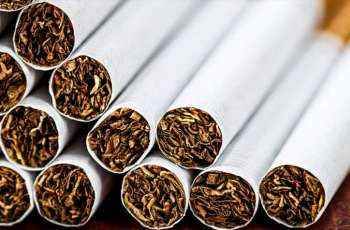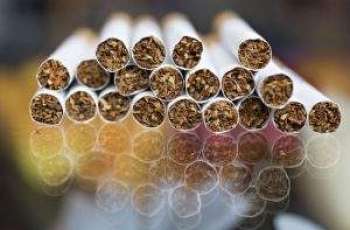MOSCOW (Pakistan Point News / Sputnik - 18th December, 2020) Like their competitors across the world, Russian fur makers have suffered severe setbacks over the past years due to warmer winters, cheap mass market production and the youth's shift toward more sustainable consumerism, but still pin hopes on the nation's history of wearing and dealing with furs while also adapting to the new trends, designer and luxury fur atelier owner Alexander Smolny told Sputnik in an interview.
The fur industry was back in the global spotlight in November after Denmark's culling of several million minks on the back of the coronavirus outbreak at local farms. The mass culling triggered an outcry, farmers' protests and a governmental crisis that lead to the resignation of the Danish agriculture minister.
Animal welfare groups used the crisis to further push for outlawing the practice as unethical and allegedly hazardous to human health.
According to Smolny, whose fur business is located in the "northern capital" of Russia, St. Petersburg, consumers' habits in Russia as elsewhere around the world are also evolving toward sustainability, with a greater pace among the youth in big cities.
"This seems to be not only about the ideas of animal rights activists, I think that they [these views] are not close to those of the majority of solvent Russians. I do not think that at least in the near foreseeable future, the Russians will completely abandon fur. In Russia, fur means a status. This is an established culture of consumption. But the youth, especially in large cities, do not wear fur at all. We also have to adapt: we use fur in trimming and often use fur as a lining in the product with fur inside," he said.
The designer did not exclude that one of the reasons for the decline in fur sales in recent years was warming winters.
"It is true that recently we have seen snow fall out only in January. We still do have cold winter days, but the season has shifted from November to January-February. Consumers' habits, however, haven't changed, and in January, we are already psychologically getting ready for spring," he explained.
Another factor, the businessman continued, is fur overproduction recently witnessed all over the world, especially in China. In 2019, the sales of fur products in Russia dropped by 30 percent year-on-year. 2020, marred by the coronavirus pandemic and lockdowns across the globe, will obviously show even poorer sales.
NO LESS ETHICAL OR SUSTAINABLE?
The designer argued that fur farming was no more cruel than treatment of animals on regular farms, where they were slaughtered for meat. According to him, responsible farm owners actively work to develop, implement and advance animal welfare and environmental standards.
"In my opinion, it is difficult to imagine clothes that are more environmentally friendly than ones which are made of fur. It decomposes easily, it is organic. As for killing animals, people eat meat every day - for this, animals have to be slaughtered," he said.
Smolny believes that small-scale businesses like his own are the ones that the authorities should nurture a lot more in order to build a more sustainable fashion industry than today's world of fast fashion, where retailers sell only a fraction of their inventory.
According to some estimates, 80 billion kilograms of textile is produced in the world every year, with the lion's share of clothing very quickly ending up in landfill or being incinerated. As a result, the fast fashion industry has become associated with greenhouse gas emissions and wasteful practices.
Fast fashion is the cheap mass production of trendy clothing that uses cheap materials and labor in foreign countries to produce clothing following the latest trends. The designer noted that in the past decade, fashion trends and micro trends have started coming and going at a much faster rate. As a result, clothes have become more affordable and people wear them for a shorter period of time.
He emphasized that slow fashion, including the fur industry, had been by far more sustainable and ethical than fast fashion.
"Mass market fashion retailers, which made big money by completely rethinking the model of haute couture or so-called slow fashion, are changing the definition of the style in the first place. These days people see style as something that depends on newness and immediate consumption. Haute couture means something else: it is about a good fit, expensive materials and good quality," Smolny explained.
Ups and downs, however, are not new for the global fur trade, which is worth more than $22 billion a year.
Fur demand has been slowly falling since the 1950s, except for a rise between 2000 and 2013 when this trade boomed, fueled by an appetite for luxury goods in China as its middle class incomes grew. At the beginning of the last decade, mink pelts, for example, cost $90 each while the last year skins fetched only a third of that.
According to the International Fur Federation (IFF), the competition has also driven prices down significantly. When the market boomed, there were more than 4,000 fur farms in Europe alone, located in countries such as Denmark, Poland, the Netherlands, Finland, Lithuania and Greece. US, Canada and Russia also operated farms.
Some countries, however, banned the practice completely. The UK banned fur farming in 2003. Austria, Germany and Japan have also stopped production while other countries are phasing it out.
The IFF predicts that the market will strengthen following the pandemic and Denmark's ordeal, as an increase in prices over pelts' short supply will help it to recover.



